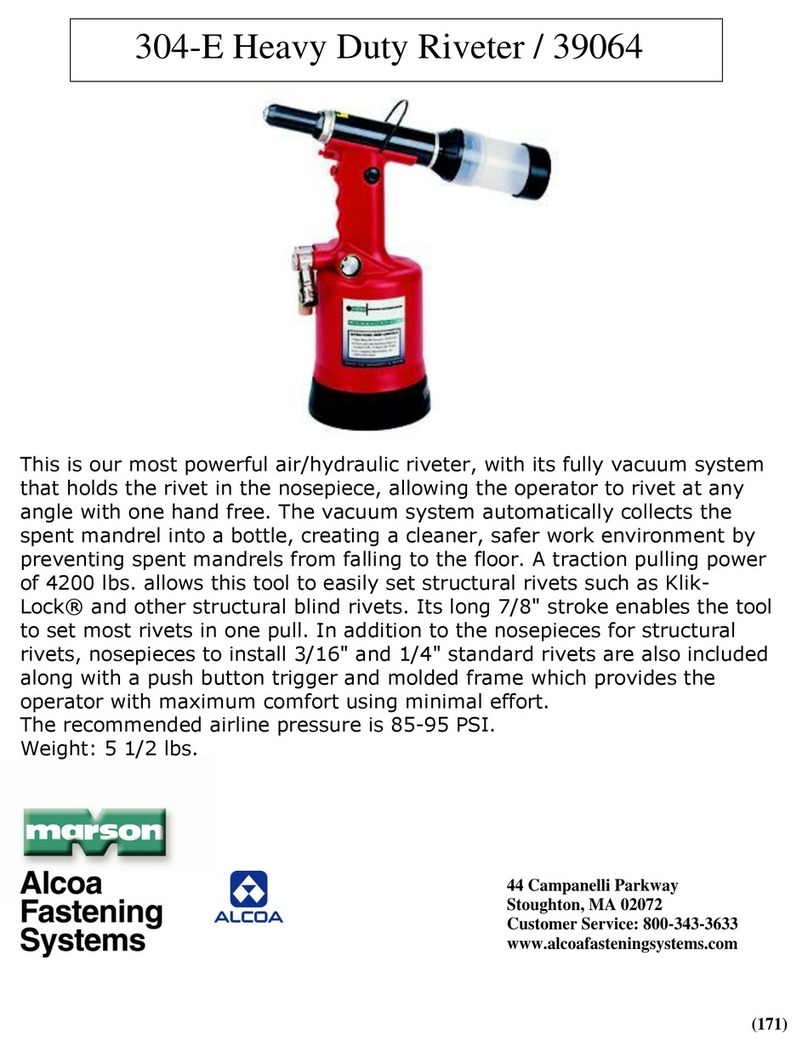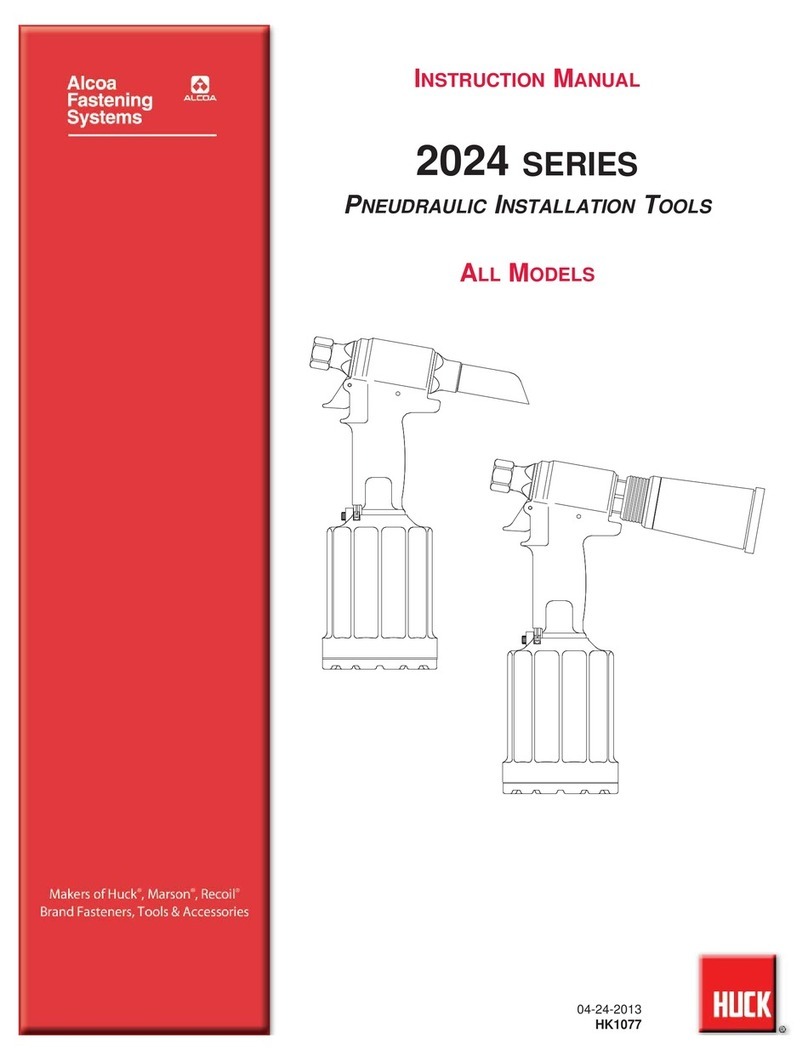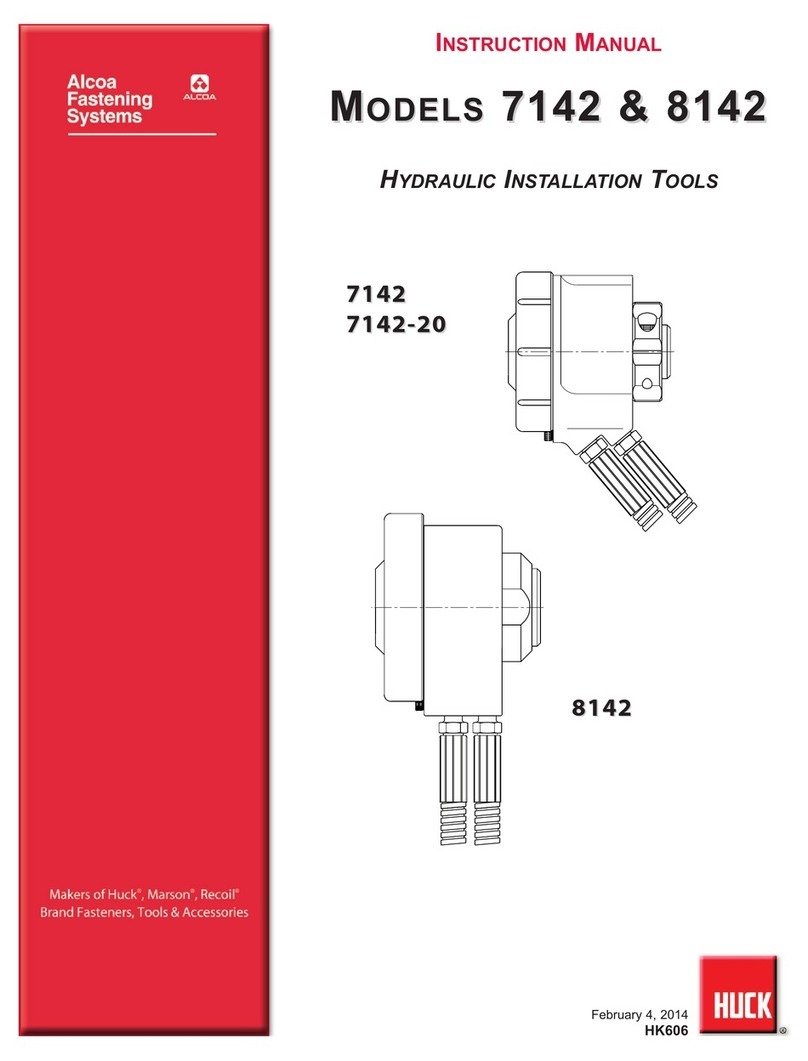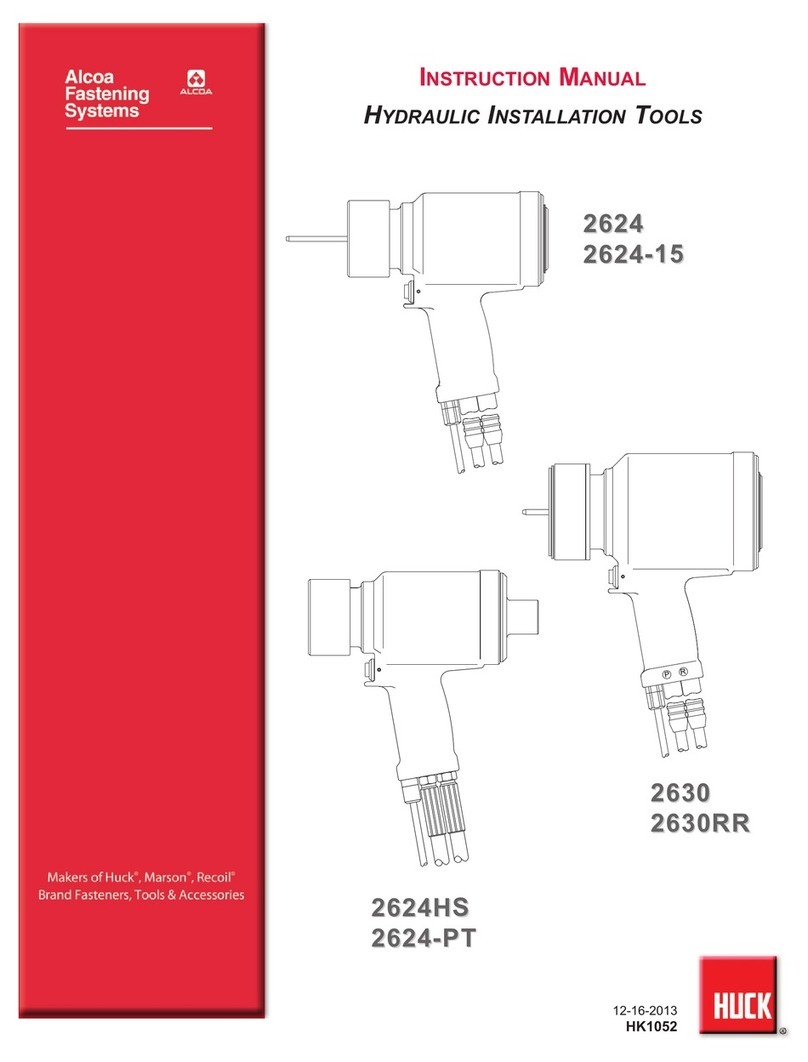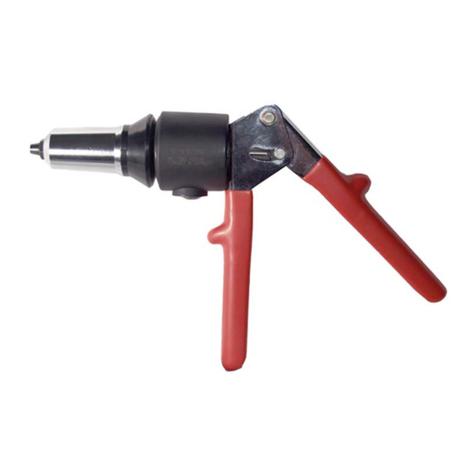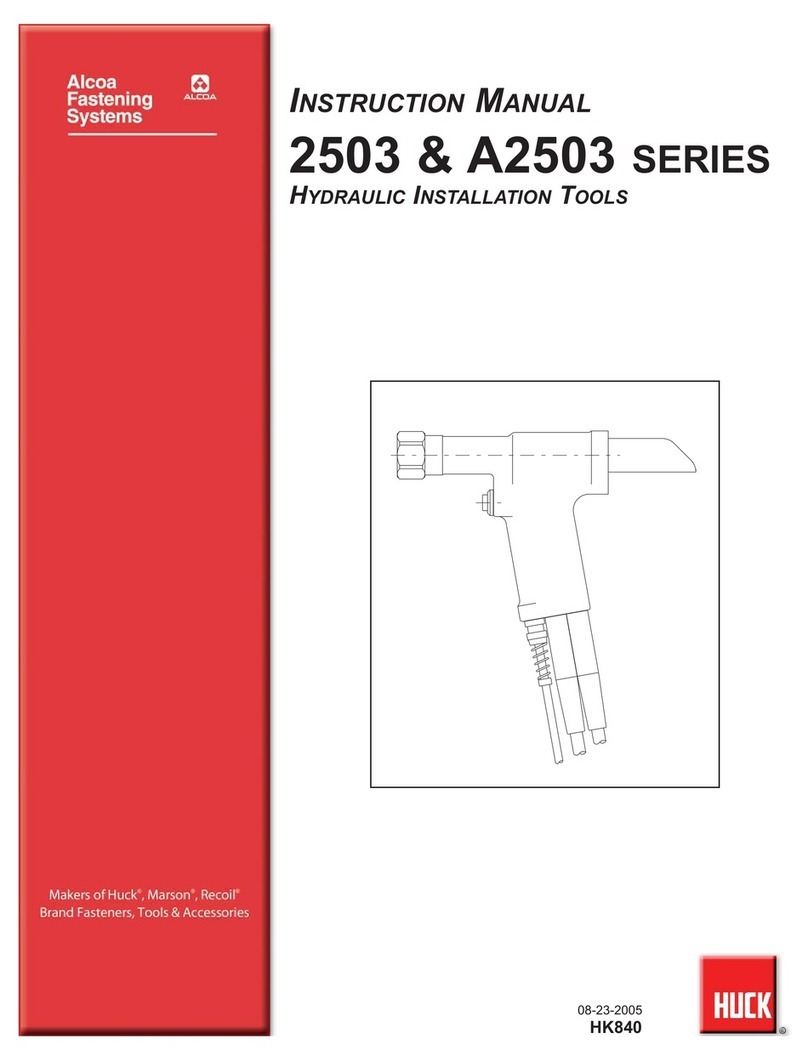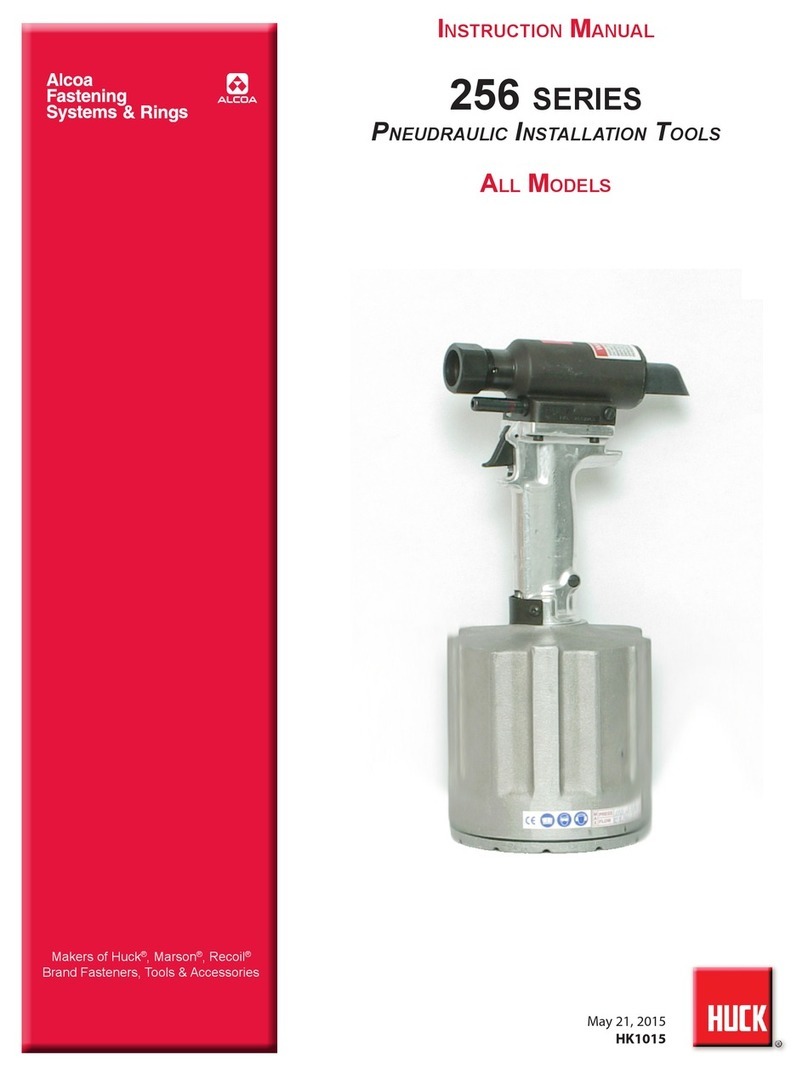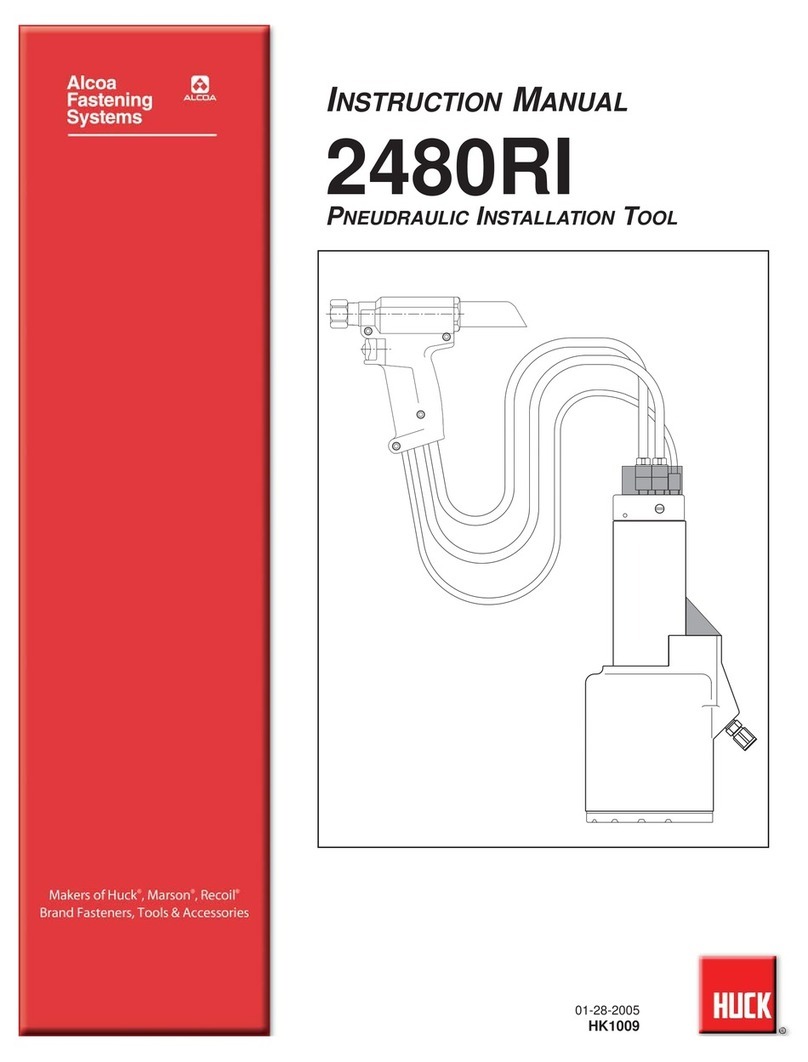200 Series Tooling Alcoa Fastening Systems
9
F
FILLING
ILLING
AND
AND B
BLEEDING
LEEDING
The Model 200 Tool does not require filling and bleed-
ing often. When it is necessary, due to loss of fluid
because of a damaged seal, or when the tool has
been overhauled, there are two methods which may
be used:
(1) - MANUALLY
1. Remove air hose from tool.
2. Turn in balancing valve bleed screw (2-40) all the way.
3. Remove filler plug (3-13) and fill with Automatic
Transmission Fluid AQ-ATF-1428A or equivalent until the
fluid level is up to the bottom of the filler hole threads. (A
filler bottle and fluid is available from Huck as part num-
ber 100932. It is included in SERVICE TOOL KIT 42-
233).
4. Wipe filler plug with a clean, lint-free cloth and replace
and tighten.
5. Attach air hose to tool, turn it upside down, and cycle 12
times by depressing and releasing the trigger.
6. Set tool upright and remove air hose.
7. Back-out balancing valve bleed screw (2-40) all the way.
Leave this screw backed-out.
8. Remove filler plug and again add fluid until the level
reaches the bottom of the filler hole threads.
9. Replace filler plug and tighten.
10. Attach air hose to tool and turn it upside down again and
cycle tool 50 times permitting full stroke for each cycle.
11. Set tool upright again and repeat steps 8, 9 and 10 until
fluid level remains at the bottom of the filler hole threads,
the foam and bubbles have disappeared and the fluid is
clear.
(2) - USING FILL AND BLEED UNIT 970-100
(Preferred method)
1. Fill unit with hydraulic fluid, Automatic Transmission
Fluid, AQ-ATF-1428A or equivalent.
2. Plug unit into 110 volt, single phase, 50/60 hertz outlet.
3. Remove filler plug (3-13). Screw in adapter (8-1) of Pull
Pressure Tube Assembly.
4. Remove ball check screw (2-49) from valve B (13-10).
Use magnet in filler plug to remove spring (2-52) and
ball (2-51). Screw in adapter (8-2) of RETURN pressure
Tube Assembly.
5. Turn bleed screw (2-40) all the way out. (Balance valve
(2-33) will be closed. Figure 13-11)
6. Turn unit switch ON. Adjust relief valve to 50-60 psi.
Hold tool in all positions until air bubbles stop flowing in
RETURN tube. Hold tool in upright position for the final
portion of the bleeding. Back out relief valve retainer (2-
44) a few turns until clear fluid (free of air) flows out.
Use a combination of “RUN” and “JOG”. Total time for
this step is approx. three minutes. Turn unit switch OFF.
7. Unscrew adapter (8-1) from filler port and replace filler
plug (3-13).
8. Remove Tube Assembly from PULL pressure port of unit
and install other Tube Assembly, P/N 110777.
9. Remove bleed plug (4-2) from front of cylinder. Screw in
adapter (8-2) of PULL pressure Tube Assembly.
10. Turn bleed screw (2-40) all the way in. (Balance valve
(2-33) will be open. Figure 13-11).
11. Turn unit switch to “ON’’. When air bubbles stop flowing
in RETURN tube, back out bleed screw (2-40). The bal-
ance valve (2-33) will be closed and the pull piston (2-
21) will move back full stroke. When flow stops out valve
B, screw in bleed screw (2-40) to open balance valve (2-
33) and re-establish flow. Hold tool head down to flush
all air out of valve B. Use a combination of “RUN’’ and
“JOG’’. Total time for this step is approx. five minutes.
Turn unit switch OFF.
12. Remove Tube Assembly from bleed port in cylinder and
re-assemble bleed plug (4-2).
13. Remove ball check screw (2-53) and guide (2-31) from
valve A. Figure 13-9 Leave spring (2-52) and ball (2-51)
in place. Screw in adapter of Tube Assembly installed in
PULL pressure port of unit.
14. Turn unit switch ON. Back out shift valve adjusting screw
(4-30), in bottom of cylinder, until there is flow out valve
B. Hold tool in all positions, especially head down, until
air bubbles stop flowing in the RETURN tube. Total time
for this step is ten minutes minimum. Turn unit switch
OFF.
15. Remove tube assemblies from the tool. Reassemble
components in ports of valves A & B. Fill ports to bottom
of threads with hydraulic fluid. Assemble ball check
screw (2-53) in valve A port and ball check screw (2-49)
in valve B port.
16. If pull piston (2-21) is in back position, turn in bleed
screw (2-40), remove filler plug (3-13), and manually
return the pull piston to the forward position.
17. Assemble filler plug (3-13) and back out bleed screw (2-
40). Turn in shift valve adjusting screw (4-30) a few
turns. Tool is now ready to set and check the shift valve
adjustment.
